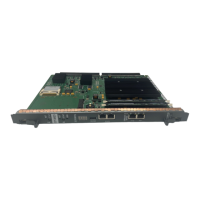62 Site planning
The display, shown in Figure 39 "Deployment handset link display" (page
61), means as follows.
•
A circle and dot indicates a locked signal.
•
The antenna symbol indicates a link establishment.
• The number 10 indicates an RSSI value.
• The dash, equal sign and shaded box icons indicate signal strength.
The maximum RSSI is 10. As signal strength diminishes, the number 10
decreases and the icons disappear. For example, at signal strength 7, the
three shaded boxes that are on the right side of the display disappear. At
signal strength 5, all the shaded boxes and one of the equal sign icons
disappear.
The signal strength diminishes as the distance between the handset and
the basestation increases. The tone remains unchanged until the handset
is out of range of the basestation.
Using the deployment tool
The deployment tool is assembled as shown in Figure 33 "Assembled
deployment tool" (page 54), with the extension arm parallel to the floor.
Position the basestation antenna upwards. Place the basestation as close
to the wall as possible and at the height recommended for basestations.
To test the deployment tool, stand in an open area approximately three
to five metres away from the deployment tool on its tripod. Establish a
link between the basestation and the handset. Keep the deployment tool
basestation in plain view. Ensure there are no obstructions (including
people).
Walk away from the basestation and observe the deployment handset link
display. As the deployment handset moves away from the basestation, the
RSSI value changes. After the RSSI value changes from 7 to 6 and the
last shaded block disappears, the cell boundary is reached.
After the cell boundary is reached, stop and listen to the tone. Ensure
the tone is clear with no tone changes, tone breakup, modulation, mutes
or clicks.
Nortel Communication Server 1000
SIP DECT Fundamentals
NN43120-123 01.07
6 January 2009
Copyright © 2008-2009 Nortel Networks
.

